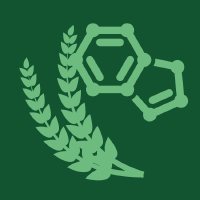Topic Menu
► Topic MenuTopic Editors

Nutrition in Cancer and Neurodegenerative Diseases
Topic Information
Dear Colleagues,
While people are generally concerned about their dietary and nutritional balance in staying healthy, this is even more so the case for those suffering from cancer and neurodegenerative diseases. It has been some time since we first linked our diet with our health, although studies illustrating how nutrition affects cancer or neurodegenerative diseases were first raised only half a century ago. On the one hand, combinational research, including population, clinical, and basic studies, have revealed that our diet is highly tied with these conditions. On the other hand, their relations are not yet definitively clear due to the extreme complexity in our food, oncology, and neurology. While we are trying all possible dietary patterns to reach an optimal nutritional balance against these diseases, among which includes the ketogenic diet, low-carb diet, vegetarian diet, Mediterranean diet, and intermittent fasting, systematic and individualized studies into nutrition effective against these conditions requires more attention and effort to ensure the wellbeing of all. The 10th National Congress of Nutritional Oncology Congress (NCNO), recently held in Beijing, is one such example of such an effort, with a union of physicians and researchers focused on promoting developments in this field.
Currently, there are many aspects of major concern in nutrition for patients of cancer and neurodegenerative diseases: the biology of nutrition and diseases, the epidemiology of nutrition and diseases, approaches investigating nutrition and diseases, gene–nutrition interaction, nutritional prevention of diseases, bioactive food component against diseases, nutritional assessment, implementation, and support to diseases. Furthermore, there may be other aspects of nutrition that we have not yet mentioned or considered. To report the newest findings, to communicate, and to promote this field, Prof. Dr. Zheng and I will host this topic in the journals of Nutrients, Foods, Brain Sciences, and Dietetics with the support of Prof. Dr. Hanping Shi, the President of the Chinese Society of Nutritional Oncology and Chair of the 10th NCNO. All researchers in this field, inside or outside of the 10th National Congress of Nutritional Oncology Congress, China, are welcome to submit.
To illustrate how diet and nutrition affects the prevention, initiation, progression, recurrence, and curation of cancer and neurodegenerative diseases, papers on but not limited to the following topics are welcome:
- Effects of food and nutrition on cancer and neurodegenerative diseases
- Nutrition–microbiome relation on cancer and neurodegenerative diseases
- Nutrition–metabolic regulation
- Nutrition–cell microenvironment
- Oncology–immunology nutrition
- Nutrition–survivorship
- Any other nutritional studies related to cancer and neurodegenerative diseases
Dr. Dong Yang
Dr. Jusheng Zheng
Topic Editors
Keywords
- nutrition
- cancer
- neurodegenerative diseases
- Alzheimer’s
- Parkinson’s
- dementia
- microbiome
Participating Journals
| Journal Name | Impact Factor | CiteScore | Launched Year | First Decision (median) | APC |
|---|---|---|---|---|---|

Nutrients
|
5.9 | 9.0 | 2009 | 14.5 Days | CHF 2900 |

Foods
|
5.2 | 5.8 | 2012 | 13.1 Days | CHF 2900 |

Brain Sciences
|
3.3 | 3.9 | 2011 | 15.6 Days | CHF 2200 |

Dietetics
|
- | - | 2022 | 24.3 Days | CHF 1000 |

MDPI Topics is cooperating with Preprints.org and has built a direct connection between MDPI journals and Preprints.org. Authors are encouraged to enjoy the benefits by posting a preprint at Preprints.org prior to publication:
- Immediately share your ideas ahead of publication and establish your research priority;
- Protect your idea from being stolen with this time-stamped preprint article;
- Enhance the exposure and impact of your research;
- Receive feedback from your peers in advance;
- Have it indexed in Web of Science (Preprint Citation Index), Google Scholar, Crossref, SHARE, PrePubMed, Scilit and Europe PMC.


